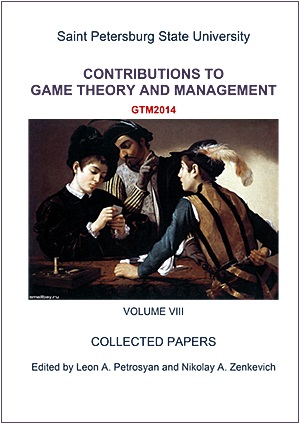Bidding Games with Several Risky Assets and Random Walks of Stock Market Prices
Abstract
We consider multistage bidding models where several types of risky assets (shares) are traded between two agents that have different information on the liquidation prices of traded assets. These random prices depend on ”a state of nature”, that is determined by the initial chance move according to a probability distribution that is known to both players. Player 1 (insider) is informed on the state of nature, but Player 2 is not. The bids may take any integer values. The n-stage model is reduced to a zero-sum repeated game with lack of information on one side of Player 2. We show that, if liquidation prices of shares have finite variances, then the sequence of values of n-step games is bounded. This makes it reasonable to consider the bidding of unlimited duration. We give the solutions for corresponding infinite games. Analogously to the case of two risky assets (see Domansky and Kreps (2013)) the optimal strategy of Player 1 generates a random walk of transaction prices. The symmetry of this random walk is broken at the final stages of the game.
Keywords:
multistage bidding, asymmetric information, price fluctuation, random walk, repeated game, optimal strategy
Downloads
References
Downloads
Published
How to Cite
Issue
Section
License
Articles of "Contributions to Game Theory and Management" are open access distributed under the terms of the License Agreement with Saint Petersburg State University, which permits to the authors unrestricted distribution and self-archiving free of charge.




